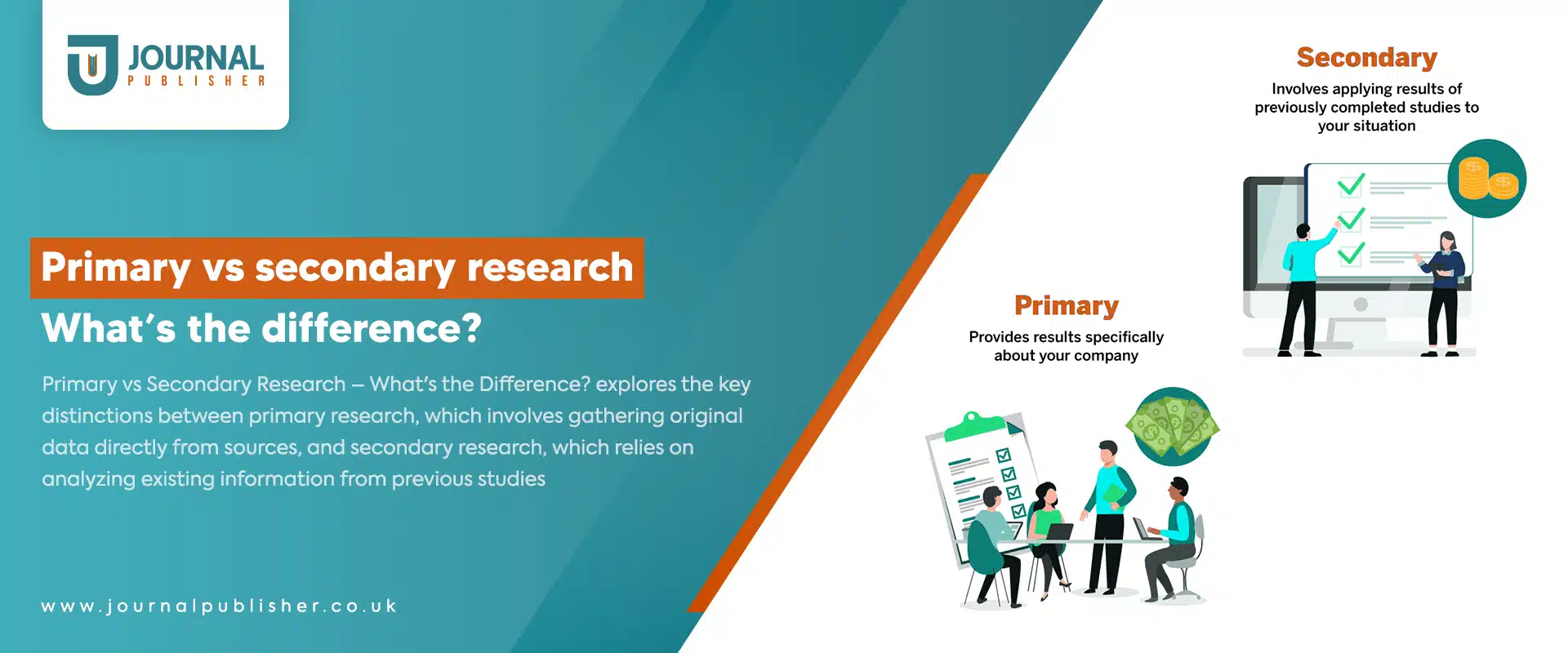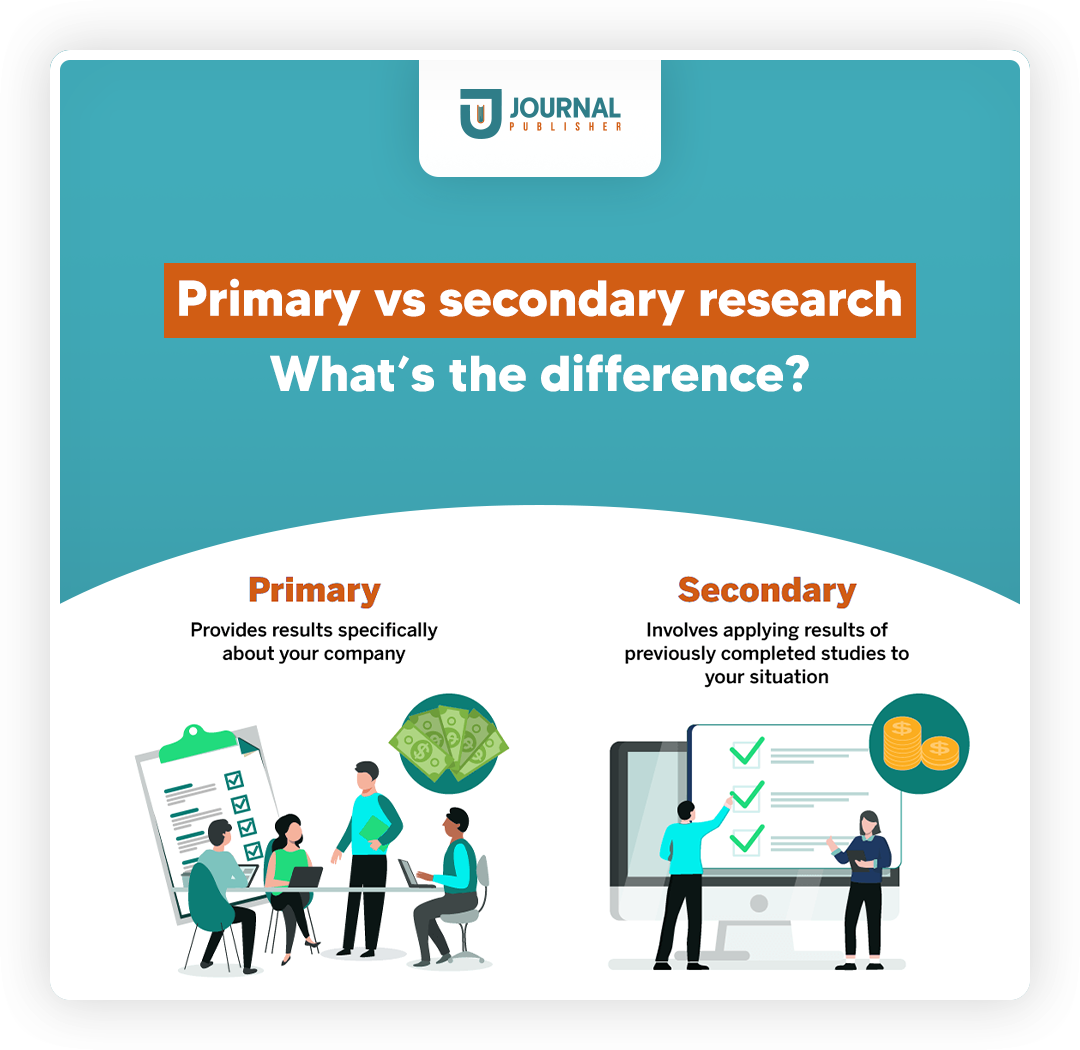Author: Layla Taylor |  8 min read
8 min read
Don’t Have Time to Read? Listen to this Article Instead!
Key Takeaways: Primary vs Secondary Research
Research is a blend of art and science. Besides, a researcher is a skilled artist. Suppose you’re doing research. In that case, you should know the difference between primary vs secondary research. So, if you don’t, our blog can help you understand this and become a better researcher.
- Primary research is used when you collect new information. You gather data through surveys, interviews, and experiments.
- Secondary research is used when you use old information that someone else has already collected. You collect data from articles, books, government reports, and old studies.
- Primary research is best in order to find something new. On the other hand, secondary research is helpful in the historical context.
Uplift Your Research with a Winning Proposal
Our expert writers will write a perfect proposal that not only impresses reviewers but also secures your project’s funding.
Introduction
Research is a vital part of academic writing. It is a helpful tool that you can use to discover new info and develop creative solutions. Want to learn more about what research is? Then, you can read our blog:
“What is Research? Definition, Methods, Types, Process & Examples“
Research is essential. However, you should learn the different types of research. As a result, it can be easy to choose the one that is most suitable for your study. This is because each type involves diverse approaches.
Primary and secondary research are two main types. But each serves a distinct purpose. These types of research cover a wide range of research methods.
This informative piece will explore the difference between primary vs secondary research for you. So, let us begin.
What is Primary Research?
Primary research is used when you plan to study from scratch. You go out and collect new information yourself. You use different processes to gather information, such as interviews.
For Example:
You want to know what students think about school lunches. That being the case, you could survey them directly.
Read More: “What is Primary Research?“
What is Secondary Research?
Secondary research is like using someone else’s work. You look at information that has already been collected by other people. You can collect data through books and other sources.
For Instance:
You want to know how many people voted in the last election. If so, you could look at government records.
Read More: “What is Secondary Research?“
Primary vs. Secondary Research: The Difference
When to Use Primary Research?
Primary research is most effective when you need to achieve the following goals:
- It is ideal when the data you need is not found in current literature or databases.
- This type of research can reveal new trends, patterns, or angles that are not covered before.
- The idea of this research is to confirm or refute previous findings.
- You can collect data directly from the target people in order to obtain relevant insights.
When to Use Secondary Research?
Secondary research is a good option when:
- You are looking for available data or trends to derive new findings on a study.
- You aim to compare your findings with those from existing studies or industry standards to validate or contrast your results.
- This type of research can help you refine your questions or hypotheses before going to primary research.
- You want to analyze different viewpoints on a subject in order to understand it better.
Sources of Primary Research
Surveys and Questionnaires
In this process, you ask people a set of questions, which can be written or online. Researchers gather the responses directly in order to understand what people think, feel, or do. For the most part, it is used in quantitative methods.
Interviews
Interviews are one-on-one talks with concerned people. A researcher may also ask questions to learn about their thoughts, feelings, or experiences. They can generally take place in person, over the phone, or online.
Focus Groups
In a focus group, a small number of people discuss a specific topic. The researcher listens to their opinions and experiences. When you gather different viewpoints on the subject, it improves your know-how of a subject.
Observations
It can help how people or events unfold in real life without disturbing them. For example, they might observe how customers behave in a store to gather information.
Experiments
You control certain conditions to test an idea. You can see how people react or how outcomes change by changing situations. It also helps you understand cause and effect.
Case Studies
A case study is a deep study of a specific topic. It is a way to learn a lot about something by looking closely at real-life examples. For instance, you could study a person, a group, a place, or an event to understand it better.
Sources of Secondary Research
Academic Journals
In these types of journals, you get the articles from experts. Articles that peers have reviewed. It can provide reliable and detailed information on different topics based on new studies. This is a qualitative method by nature.
Books and Textbooks
Books are written by experts to give a lot of information on a certain subject. It can explain lots of factors in a simple or detailed way.
Government Reports
These are official papers from gov offices that share facts, numbers, and ideas on topics such as:
- Health,
- Education,
- or The Economy.
Databases
Databases are online places where you can find lots of information. For example, PubMed or Google Scholar has many research papers that help people learn more about different subjects.
Online Articles and Blogs
Websites and blogs offer a wide range of information. Some content is written by experts, while others may simply reflect personal opinions.
Newspapers and Magazines
News is good for learning about current news and trends. It also offers the latest information about things happening around the world.
Market Research Reports
Market reports focus on how people shop and what is popular in the market. Companies use them to understand their customers better. As a result, it will help you make better business decisions.
Theses and Dissertations
These are big research papers students write to earn degrees. They often have new research and ideas on specific topics.
Read more about academic writing:
Content Analysis
This is used when examining a bunch of messages or texts to find patterns or trends. You can count things (such as how many times a word appears). Also, you can try to understand the meaning behind what’s being said. This method is often used in fields such as communication and history.
Perfect Your Research Paper with us
Our team of skilled proofreaders will carefully refine your research paper. Also, we ensure it’s polished and professional.
Pros and Cons of Primary Research
Pros
- You gather data that directly answer your specific research question.
- You decide how to collect the data. In addition, you can choose how to use it.
- The data tends to be more precise and trustworthy.
- You may find fresh insights or trends through your research.
Cons
- It can take a lot of time to gather new data.
- This type of research can be costly, especially for big projects.
- If it is not done correctly, then there is a chance that personal biases might affect the results.
Pros and Cons of Secondary Research
Pros
- It is easier to use old data than to collect new data. You can also save time by using old data.
- It’s often free or cheaper than doing primary research.
- You can look at data from various sources to get a broader understanding.
- It can also back up or strengthen your primary research results.
Cons
- The data might not perfectly match your specific research needs.
- The reliability of the data can differ depending on the source.
- You cannot control how the data is gathered or analyzed.
- The original researchers’ biases might have influenced the data.
How to Use Primary vs Secondary Research
You can start with secondary research. As a result, it will give you a good understanding of what’s already known. The best use case of primary research is to find specific details. So, if you need to know something new or more specific, you can do primary research.
Conclusion
Primary vs secondary research are two ways to find information. Primary research means getting new information straight from the source. On the other hand, Secondary research uses information that someone else has already found. Now, you know these differences. Then, it can help you do better research and get good grades.
With expert English editing, Journal Publisher can help you perfect your academic writing, from secondary to primary research. So, contact us for:
And get the best services for your academic needs.
Frequently Asked Question
What is the difference between primary and secondary examples?
- Primary example: You talk to a teacher directly to learn how they teach.
- Secondary example: You read a book by someone who studied how teachers teach.
What is an example of secondary research?
You are writing a report about the weather getting warmer. Instead of going outside and measuring the temperature yourself, you could look at studies that scientists have already done. These studies are examples of using other people's work.
Don’t miss this video – it’s packed with valuable information!
Credit: Scribbr
Refine Your Research with Expert Editing
Your research deserves the best. Our skilled editors will refine your paper. They will also ensure it is error-free and ready for submission.





